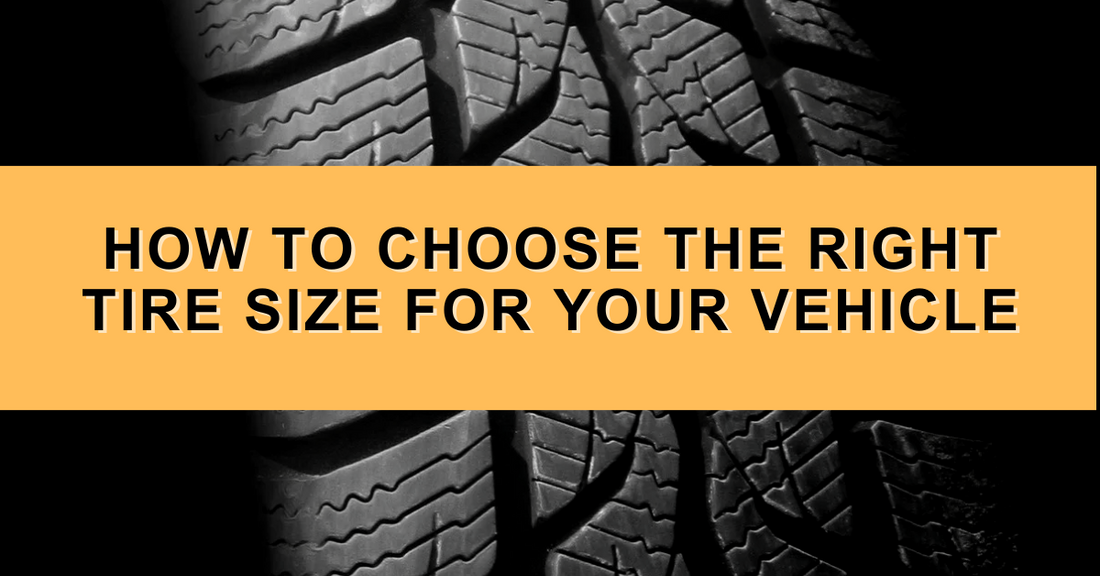
How to Choose the Right Tire Size for Your Vehicle
Share
🚘 Why Tire Size Matters
Choosing the right tire size is essential for safety, performance, and fuel efficiency. The wrong size can lead to poor traction, uneven wear, or even mechanical issues.

Example of a tire sidewall with size markings.
🔍 How to Read a Tire Size Code (e.g. 225/65R17)
- 225 → Tire width in millimeters
- 65 → Aspect ratio (sidewall height as a % of width)
- R → Radial construction
- 17 → Wheel diameter in inches
Example: A 225/65R17 tire is 225mm wide, 146.25mm tall (65% of 225), and fits on a 17-inch rim.
🚗 3 Ways to Find Your Vehicle’s Tire Size
1. Check Your Current Tires
Look directly at the sidewall of your existing tires for a code like P215/60R16.
2. Driver’s Side Door Sticker
Open the driver’s door and look for the manufacturer’s sticker. It usually includes the recommended tire size and pressure settings.
3. Vehicle Owner’s Manual
Your manual provides exact tire size and seasonal alternatives (e.g. narrower winter tires).
❄️ Do Winter Tires Have Different Sizes?
Yes – sometimes winter tires are slightly narrower for better grip in snow. Check manufacturer guidelines before downsizing.
Example: If your factory tire is 235/60R18, your winter tire might be 225/65R17.
🛒 Ready to Shop?
Use our Tire Size Filter below to find tires that fit your vehicle:
🧠 Final Tips
- Never mix tire sizes on the same axle
- Stick to manufacturer recommendations
- Always recheck after changing rims or suspension
Still not sure which size fits your car? Our experts are happy to help! Contact us or chat with a tire specialist today.












